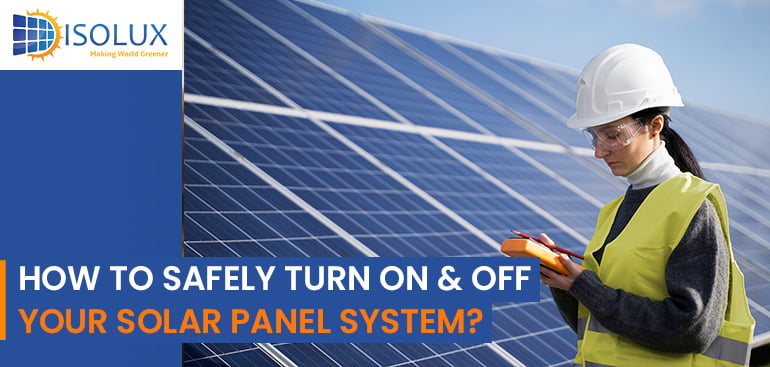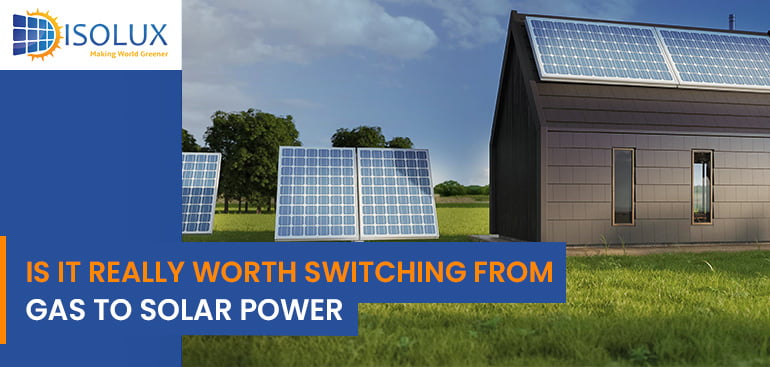Solar panels are a brilliant investment, offering a clean and sustainable way to power your home while reducing your electricity bills. However, there may be situations where you need to turn your solar system off, such as for maintenance, repairs, roof cleaning, or even during firefighting operations.
Understanding how to safely turn your solar system on and off is crucial. This guide will equip you with the knowledge and best practices to navigate this process while prioritizing safety.
Understanding Your Solar Panel System
Before diving into the steps, it’s important to have a basic understanding of how your solar panel system works. Here’s a simplified breakdown:
1. Solar Panels: Panels capture sunlight and convert it into direct current (DC) electricity.
2. Inverter: The DC electricity from the panels is sent to the inverter, which converts it into alternating current (AC) electricity, compatible with your home’s electrical appliances.
3. Solar Disconnect Switch: This critical switch acts as the main control point for your solar system, isolating it from the rest of your home’s electrical grid.
4. Meter: This device measures the electricity flowing in and out of your home, including the electricity generated by your solar panels and the electricity drawn from the utility grid.
Safety First: Essential Precautions
Turning off your solar system involves working with electricity. Here are some non-negotiable safety precautions to take before proceeding:
Consult Your System Manual: This is your primary source of information. The manual will detail the specific steps and locations of your system’s components, including isolator switches.
Turn Off Appliances: For added safety, it’s wise to turn off unnecessary appliances in your home before working on the solar system.
Appropriate Clothing and Tools: Wear proper clothing, including insulated gloves and safety glasses, to protect yourself from potential electrical hazards.
Inform Others: Let someone in your household know that you’ll be working on the solar system and won’t be able to access electricity for a while.
Unplug from the Grid (Optional): While not always necessary, some systems allow you to disconnect from the utility grid for added safety completely. Consult your manual for instructions on how to do this safely, if applicable.
Turning Off Your Solar System: A Step-by-Step Guide
Now that you’ve prioritized safety, let’s explore the steps involved in turning off your solar system:
1. Locate the Solar Disconnect Switch
This is the most crucial switch, often located near the inverter but could also be on your main electrical panel or meter box. Look for a clearly labeled switch marked “Solar Disconnect” or “PV Disconnect” (PV stands for photovoltaic, which is the technology used in solar panels).
2. Turn Off the Solar Disconnect Switch
Once located, simply flip the switch to the “off” position. This isolates your solar panels from the rest of your electrical system, preventing them from generating electricity.
3. Additional Isolator Switches (Optional)
Depending on your system’s complexity, you might have additional isolator switches to turn off. These could include:
- Solar AC Isolator: This switch isolates the AC output from the inverter. It might be located near the inverter itself.
- PV Array DC Isolator: This switch isolates the DC current coming from the solar panels. You’ll likely find it near the combiner box, which houses all the DC wiring from the panels.
- Inverter Isolator: Some inverters have a built-in isolator switch. Check your inverter manual for details.
4. Verify the System is Off
Once you’ve turned off all the identified switches, it’s wise to double-check that your system is indeed off. Use a voltage tester to confirm there’s no electricity flowing between the solar panels and the inverter, or between the inverter and your home’s electrical system.
Turning Your Solar System Back On
Once you’ve completed your maintenance or repairs, you can back up your solar system by following the steps above in reverse order. Remember to turn on any additional isolator switches you might have turned off before turning on the solar disconnect switch.
Situations When You Might Need to Turn Off Your Solar System
Here are some common situations where turning off your solar system might be necessary:
Maintenance and Repairs: Scheduled maintenance on your inverter or cleaning the solar panels might require turning off the system for safety reasons.
Roof Work: Any work on your roof, such as repairs or replacements, necessitates turning off the solar system to avoid accidental contact with live electrical components.
If you’re looking to install Solar panels in Sydney, we at Isolux Solar are your go-to choice. Get in touch with us today or call on +61 1300 552 452.
Read Next Blog:




